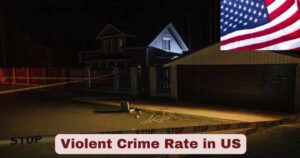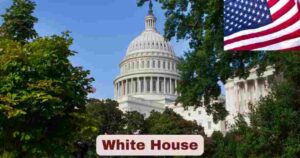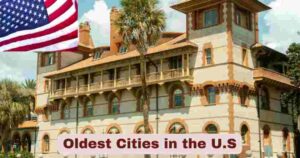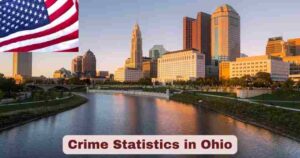Immigration in New Orleans 2025
The immigration landscape in New Orleans continues to evolve significantly as the city rebuilds and transforms following decades of demographic shifts. As of 2025, the New Orleans metropolitan area represents a unique immigration hub within Louisiana, demonstrating substantially higher foreign-born population concentrations compared to state averages. The city has emerged as a critical gateway for immigrant communities, particularly for Central American and Asian populations, who contribute extensively to the region’s economic recovery and cultural renaissance. Understanding these immigration statistics in New Orleans 2025 provides essential insights into workforce dynamics, economic contributions, and community development patterns that shape the city’s future.
The immigration data for New Orleans in 2025 reflects broader national trends while maintaining distinct regional characteristics. Unlike traditional immigrant gateway cities, New Orleans has developed specialized immigrant communities with Honduran Americans representing the largest Hispanic group and Vietnamese Americans forming the predominant Asian demographic. These populations have demonstrated remarkable resilience and economic integration, contributing significantly to sectors including construction, hospitality, fishing, and healthcare. The New Orleans foreign-born population has grown steadily over the past two decades, playing an increasingly vital role in addressing labor shortages and supporting the city’s post-Katrina recovery efforts. This comprehensive analysis examines verified federal data to present an accurate portrait of immigration in New Orleans 2025.
Key Immigration Facts and Latest Statistics in New Orleans 2025
| Immigration Metric | New Orleans 2025 Data | Comparison/Context |
|---|---|---|
| Foreign-Born Population (Metro Area) | 9.5% of total population | Highest in Louisiana; National average: 14.8% |
| New Orleans City Foreign-Born Population | Approximately 22,900 residents | 5.9% of city population |
| Hispanic/Latino Population Growth | 31,213 residents (9% of Orleans Parish) | Nearly doubled since 2000 from 3% |
| Vietnamese Population | 4,412 residents in New Orleans | Largest Asian subgroup in the city |
| Asian Population | 11,049 residents (2.8% of city population) | Includes Indians, Chinese, Filipinos, Vietnamese |
| Naturalized U.S. Citizens (Foreign-Born) | 11,013 naturalized citizens | 48% of foreign-born residents |
| Non-Citizens (Foreign-Born) | 11,910 non-citizen residents | 52% of foreign-born population |
| Top Countries of Origin (Louisiana) | Honduras (18.9%), Mexico (12.4%), Vietnam (8.4%) | Unique from national patterns |
| Louisiana State Foreign-Born Share | 5.2% of population (239,000 people) | Up from 4.2% in 2014 |
| ICE Arrests in Louisiana (Jan-Jun 2025) | 1,989 arrests | 48% had criminal convictions |
| Metro Area Population (7-Parish) | 966,230 residents | Down 4.1% from 2020 |
| International Migration Contribution (Louisiana) | 23,000 net increase (2023-2024) | Largest in decades, prevented population loss |
Data Source: U.S. Census Bureau American Community Survey 2024, Population Estimates 2024, U.S. Immigration and Customs Enforcement, Migration Policy Institute
The immigration statistics for New Orleans in 2025 reveal a metropolitan area with 9.5% foreign-born residents, making it the highest concentration in Louisiana and significantly above the state average of 5.2%. Within Orleans Parish itself, approximately 22,900 residents are foreign-born, representing 5.9% of the city population, though this includes both naturalized citizens and non-citizens. The Hispanic population has experienced dramatic growth, nearly tripling from 3% in 2000 to 9% in 2024, with 31,213 Hispanic residents now calling New Orleans home. This growth rate substantially exceeded national trends during the post-Katrina period, with the metro area experiencing 57% Hispanic population growth between 2000 and 2010 compared to 43% nationally.
The Asian American population in New Orleans totals 11,049 residents, with Vietnamese Americans comprising the largest subgroup at 4,412 individuals, followed by Chinese (2,100), Asian Indians (1,858), and Filipinos (382). Regarding citizenship status, 11,013 foreign-born residents have naturalized as U.S. citizens, representing approximately 48% of the foreign-born population, while 11,910 remain non-citizens. At the state level, Louisiana hosts approximately 239,000 foreign-born residents as of 2024, with immigrants predominantly originating from Honduras (18.9%), Mexico (12.4%), and Vietnam (8.4%)—a markedly different pattern from national immigration trends. The New Orleans metro area received 23,000 net international migrants between 2023 and 2024, the largest increase in decades, which prevented overall population decline. Immigration enforcement data shows 1,989 ICE arrests occurred in Louisiana from January through June 2025, with 48% involving individuals with criminal convictions and 34% involving pending charges.
Foreign-Born Population in New Orleans Metro Area 2025
| Geographic Area | Total Population | Foreign-Born Population | Percentage Foreign-Born | Change Since 2000 |
|---|---|---|---|---|
| New Orleans Metro Area (7-Parish) | 966,230 | Approximately 91,800 | 9.5% | +2.3 percentage points |
| Orleans Parish (New Orleans City) | 357,767 | 22,900 | 6.4% | +2.2 percentage points |
| Jefferson Parish | 433,000 | Approximately 41,100 | 9.5% | +3.8 percentage points |
| Louisiana State | 4,597,740 | 239,000 | 5.2% | +1.0 percentage points |
| United States National | 340,110,990 | Approximately 50.3 million | 14.8% | +2.8 percentage points |
Data Source: U.S. Census Bureau American Community Survey 2024, Population Estimates 2024, USAFacts
The foreign-born population distribution across the New Orleans metropolitan area in 2025 demonstrates significant geographic concentration patterns, with the seven-parish metro area maintaining a 9.5% foreign-born share—the highest concentration in Louisiana. Within Orleans Parish specifically, 22,900 residents were born outside the United States, representing 6.4% of the city’s 357,767 total population. This figure reflects substantial growth since 2000, when the foreign-born share stood at approximately 4.2%, indicating a 2.2 percentage point increase over two decades. Jefferson Parish, the most populous suburban parish, hosts approximately 41,100 foreign-born residents at 9.5% of its population, showing even more substantial growth with a 3.8 percentage point increase since 2000.
At the state level, Louisiana’s foreign-born population reached 239,000 individuals in 2024, constituting 5.2% of the state’s total population of 4.6 million residents. This represents an increase from 4.2% in 2014 and 4.0% in 2000, though Louisiana continues to maintain a foreign-born share substantially below the national average of 14.8%. The New Orleans metro area’s 9.5% foreign-born concentration stands nearly double the state average, confirming the city’s role as Louisiana’s primary immigrant gateway. Between 2000 and 2024, the foreign-born share of the metro population increased by 2.3 percentage points, with growth accelerating significantly after Hurricane Katrina in 2005 as immigrant workers participated actively in reconstruction efforts. Metropolitan statistical data confirms that among Louisiana’s metro areas, New Orleans maintains the highest foreign-born population share at 9.5%, compared to Monroe at 1.9%, highlighting the city’s unique position within the state’s immigration landscape.
Hispanic and Latino Immigration Population in New Orleans 2025
| Hispanic/Latino Metric | New Orleans 2025 | Louisiana 2025 | United States 2025 |
|---|---|---|---|
| Total Hispanic/Latino Population (Orleans Parish) | 31,213 | 320,000 (7% of state) | 65.3 million (19.1%) |
| Percentage of Total Population | 9% of Orleans Parish | 7% of Louisiana | 19.1% of U.S. |
| Growth Since 2000 | +167% (nearly tripled) | +120% | +73% |
| Metro Area Hispanic Population | 135,517 residents | N/A | N/A |
| Percentage of Metro Population | 14% of 7-parish metro | N/A | N/A |
| Jefferson Parish Hispanic Population | 86,663 residents | N/A | N/A |
| Top Nationality | Honduran (32%) | Honduran (18.9%) | Mexican (57%) |
| Mexican Population Share | 13% of Hispanics | 12.4% of immigrants | 57% of Hispanics |
| Post-Katrina Growth (2000-2010) | +57% in metro | N/A | +43% nationally |
Data Source: U.S. Census Bureau Population Estimates 2024, American Community Survey 2024, The Data Center New Orleans
The Hispanic and Latino population in New Orleans has experienced extraordinary growth over the past 25 years, transforming the city’s demographic composition significantly. As of 2024, 31,213 Hispanic residents live in Orleans Parish, representing 9% of the city’s total population—a dramatic increase from just 3% in 2000. This represents a 167% growth rate, nearly tripling the Hispanic population over two decades. The broader New Orleans metro area hosts 135,517 Hispanic residents, comprising 14% of the seven-parish metro population. Between 2000 and 2024, the number of Hispanics in the metro increased by more than 81,500 residents, with particularly rapid growth occurring during the post-Katrina reconstruction period when the metro area experienced 57% Hispanic population growth from 2000 to 2010, substantially exceeding the 43% national growth rate.
Jefferson Parish has emerged as the primary Hispanic population center in the region, with 86,663 Hispanic residents representing over 20% of the parish population—more than double the 32,418 residents counted in 2000. The composition of New Orleans’ Hispanic population differs markedly from national patterns, with Honduran Americans comprising 32% of metro area Hispanics, making New Orleans a major hub of Honduran migration despite Hondurans representing only 2% of the national Hispanic population. Mexican Americans constitute 13% of metro New Orleans Hispanics, far below their 57% share nationally. At the state level, Louisiana hosts approximately 320,000 Hispanic residents (7% of population), with immigrants predominantly originating from Honduras (18.9%) and Mexico (12.4%). From 2020 to 2024, while the overall metro population declined by 41,045 residents, the Hispanic population continued growing by 10,155 residents, demonstrating the critical role of Hispanic immigration in offsetting population losses and supporting economic recovery across the New Orleans region.
Asian American Immigration Population in New Orleans 2025
| Asian American Demographic | New Orleans City 2025 | Metro Area | Louisiana |
|---|---|---|---|
| Total Asian Population | 11,049 residents | 28,000+ residents | 90,000+ residents |
| Percentage of Population | 2.8% of city | 2.9% of metro | 2.0% of state |
| Vietnamese Population | 4,412 (largest subgroup) | 14,000+ | 35,000+ |
| Chinese Population | 2,100 | 6,500 | 15,000+ |
| Asian Indian Population | 1,858 | 5,000+ | 25,000+ (largest) |
| Filipino Population | 382 | 7,000 | 12,000+ |
| Korean Population | 466 | 1,500+ | 4,000+ |
| Japanese Population | 453 | 1,200+ | 3,000+ |
| Other Asian Populations | 1,378 | 3,800+ | 10,000+ |
| Growth Since 1980 | Quadrupled (400%+) | Quadrupled (400%+) | Tripled (300%+) |
Data Source: U.S. Census Bureau American Community Survey 2024, The Data Center New Orleans, Migration Policy Institute
The Asian American population in New Orleans totals 11,049 residents as of 2024, representing 2.8% of the city’s population and constituting a diverse community with roots across multiple Asian nations. The Vietnamese American community dominates Asian demographics with 4,412 residents, making them the largest Asian subgroup in New Orleans and reflecting the significant Vietnamese migration that began after the Fall of Saigon in 1975. Vietnamese residents have established strong communities particularly in New Orleans East and surrounding areas, becoming integral to the regional fishing and shrimping industries where they represent a substantial workforce majority. The Chinese American population stands at 2,100 residents, followed by Asian Indians at 1,858, Koreans at 466, Japanese at 453, Filipinos at 382, and 1,378 residents from other Asian backgrounds.
Across the broader New Orleans metro area, the Asian population exceeds 28,000 residents, with the Vietnamese community numbering over 14,000 individuals, more than doubling since 1980. The metro area’s Chinese population has reached approximately 6,500 residents, Filipino population approximately 7,000, and Asian Indian population over 5,000. These populations have grown dramatically, with Asian Indian, Chinese, and Filipino populations quadrupling (increasing by over 400%) since 1980. At the state level, Louisiana hosts over 90,000 Asian American residents, with Asian Indians comprising the largest single group statewide at approximately 25,000, followed by Vietnamese at 35,000+ (though concentrated heavily in southern Louisiana), and Chinese at 15,000+. The Asian American growth trajectory in New Orleans demonstrates remarkable resilience, with post-Katrina return rates for Vietnamese communities exceeding those of other demographic groups, helping to sustain these established ethnic enclaves. Jefferson, Orleans, and St. Tammany parishes host the largest concentrations of each major Asian subgroup, with Vietnamese populations predominantly settling in Orleans and Jefferson parishes where established community networks provide cultural and economic support systems.
Citizenship and Naturalization Status in New Orleans 2025
| Citizenship Status Category | New Orleans City | Louisiana State | National Context |
|---|---|---|---|
| Total Foreign-Born Population | 22,923 | 239,000 | 50.3 million |
| Naturalized U.S. Citizens | 11,013 (48%) | 95,600 (40%) | 24.5 million (49%) |
| Non-Citizen Residents | 11,910 (52%) | 143,400 (60%) | 25.8 million (51%) |
| Foreign-Born from Europe | 1,422 naturalized, 1,887 non-citizens | Data unavailable | 4.8 million total |
| Foreign-Born from Asia | 4,739 naturalized, 2,981 non-citizens | Data unavailable | 13.2 million total |
| Foreign-Born from Africa | 208 naturalized, 499 non-citizens | Data unavailable | 2.4 million total |
| Foreign-Born from Latin America | 4,266 naturalized, 6,486 non-citizens | Data unavailable | 24.1 million total |
| Foreign-Born from Northern America | 378 naturalized, 57 non-citizens | Data unavailable | 1.1 million total |
| Eligible for Naturalization (2017) | Data unavailable | 35,239 eligible | 9.2 million nationally |
Data Source: U.S. Census Bureau American Community Survey 2024, Migration Policy Institute, American Immigration Council
The citizenship and naturalization status of New Orleans’ foreign-born population reveals important patterns of immigrant integration and legal status distribution. Of the 22,923 foreign-born residents in New Orleans, 11,013 individuals (48%) have naturalized as U.S. citizens, while 11,910 residents (52%) remain non-citizens with various legal statuses including permanent residents, temporary visa holders, and undocumented individuals. This naturalization rate of 48% aligns closely with the national average of 49%, suggesting similar pathways to citizenship among New Orleans immigrants compared to other U.S. metropolitan areas. At the state level, Louisiana’s foreign-born population of 239,000 includes approximately 95,600 naturalized citizens (40%) and 143,400 non-citizens (60%), indicating a slightly lower naturalization rate than both New Orleans city and national averages.
Breaking down citizenship status by region of origin for New Orleans reveals distinct patterns: among European-born residents, 1,422 have naturalized while 1,887 remain non-citizens; among Asian-born residents, 4,739 are naturalized citizens compared to 2,981 non-citizens, showing a higher naturalization rate likely reflecting established communities and longer residence periods; among African-born residents, 208 have naturalized while 499 remain non-citizens; and among Latin American-born residents, 4,266 are naturalized citizens while 6,486 remain non-citizens, reflecting both newer arrival patterns and potential barriers to naturalization. Northern American-born residents show 378 naturalized and only 57 non-citizens, suggesting easier pathways for Canadian and other North American immigrants. As of 2017, Louisiana had 35,239 immigrants eligible for naturalization who had not yet completed the process, representing a substantial pool of potential new citizens. The naturalization application process involves filing Form N-400 with U.S. Citizenship and Immigration Services, requiring 5 years of permanent residence (or 3 years for spouses of U.S. citizens), demonstrating good moral character, passing English and civics tests, and completing an interview. Naturalization ceremonies in the Eastern District of Louisiana are held in New Orleans federal courthouse when USCIS accumulates sufficient eligible applicants.
H-1B Work Visa and Employment-Based Immigration in New Orleans 2025
| Employment Immigration Metric | New Orleans 2025 | Louisiana 2025 | National 2025 |
|---|---|---|---|
| Top H-1B Sponsor (New Orleans) | Tulane Educational Fund | Ochsner Clinic Foundation | Amazon |
| H-1B Applications (Top Sponsor) | 74 Labor Condition Applications | 95 applications | 10,000+ approvals |
| Average H-1B Salary (Tulane) | $84,250 | $134,268 (Ochsner) | $110,000 average |
| H-1B Registration Fee (2025) | $100,000 (new applicants, effective Sept 2025) | Same | Same |
| FY 2026 H-1B Registrations | Data unavailable | Data unavailable | 343,981 eligible |
| FY 2026 Eligible Beneficiaries | Data unavailable | Data unavailable | 339,000 individuals |
| Reduction from FY 2025 | N/A | N/A | -26.9% registrations |
| H-1B Annual Cap | Same as national | Same as national | 65,000 regular + 20,000 advanced degree |
| Immigrant Entrepreneurs (Louisiana) | Data unavailable | 10.7% are foreign-born | 13.6% nationally |
| STEM Workers (Louisiana) | Data unavailable | 8.3% are immigrants | 19.2% nationally |
| Construction Workers (Louisiana) | Data unavailable | 13.5% are immigrants | 24.8% nationally |
Data Source: MyVisaJobs H-1B Reports 2025, USCIS H-1B Statistics, American Immigration Council, U.S. Department of Labor
Employment-based immigration in New Orleans centers primarily on H-1B specialty occupation visas, with the Tulane Educational Fund (Tulane University) serving as the region’s largest H-1B sponsor, filing 74 Labor Condition Applications in fiscal year 2024 for positions in New Orleans with an average salary of $84,250. At the state level, Ochsner Clinic Foundation leads as Louisiana’s top H-1B sponsor with 95 applications and a higher average salary of $134,268, reflecting the healthcare sector’s significant reliance on foreign-trained physicians and specialized medical professionals. The H-1B visa program underwent substantial changes in 2025, including President Trump’s implementation of a $100,000 one-time fee for new H-1B applications effective September 21, 2025, though this fee does not apply to renewals, status changes, or workers whose visas were issued before that date.
For fiscal year 2026, which began October 1, 2025, the national H-1B landscape showed significant contraction with 343,981 eligible registrations submitted—a 26.9% reduction from FY 2025’s 470,342 registrations. The number of eligible unique beneficiaries decreased from approximately 442,000 in FY 2025 to 339,000 in FY 2026, suggesting reduced employer demand and potentially the impact of policy changes and the new fee structure. The H-1B annual cap remains at 65,000 visas for the regular category plus an additional 20,000 for advanced degree holders, with selection occurring through a beneficiary-centric lottery system designed to reduce fraud and ensure equal chances regardless of multiple employer submissions. Beyond H-1B visas, immigrants play substantial economic roles in Louisiana, with 10.7% of entrepreneurs being foreign-born (generating $613.6 million in business income), 8.3% of STEM workers are immigrants (below the 19.2% national average), and 13.5% of construction workers are immigrants (below the 24.8% national average). The registration period for FY 2027 H-1B visas opened March 7-24, 2025, with selected petitioners receiving 90 days to submit full applications, and successful applicants receiving authorization to begin work on October 1, 2025.
Immigration Enforcement and ICE Activity in Louisiana 2025
| ICE Enforcement Metric | Louisiana Jan-Jun 2025 | New Orleans Area | Context/Details |
|---|---|---|---|
| Total ICE Arrests | 1,989 arrests | 123 in New Orleans area | From January 20 – June 26, 2025 |
| Criminal Convictions | 954 arrests (48%) | Data unavailable | Prior criminal convictions |
| Pending Criminal Charges | 672 arrests (34%) | Data unavailable | Charges pending at arrest |
| Immigration Violations Only | 362 arrests (18%) | Data unavailable | No criminal history |
| Deportations/Removals | 888 removed + 388 deported | Data unavailable | Not eligible for admission |
| Active Immigration Cases | 682 cases | Data unavailable | Ongoing court proceedings |
| Gender Distribution | >95% male | Same pattern | Consistent with prior years |
| Worksite Enforcement (Port of Lake Charles) | 11 arrests (March 13) | N/A | Critical infrastructure location |
| Worksite Enforcement (New Orleans Drainage Project) | N/A | 15 arrests (May 27) | Federally-funded FEMA project |
| Worksite Enforcement (Delta Downs Racetrack) | 84 arrests (June 17) | N/A | Southwest Louisiana, Calcasieu Parish |
| Shipyard Enforcement (New Orleans) | N/A | 25 arrests (Oct 30) | All Honduran nationals |
| 2024 Total Arrests (Louisiana) | 2,421 arrests | Data unavailable | Nearly 4x increase from 2023 (690) |
Data Source: U.S. Immigration and Customs Enforcement Press Releases, Deportation Data Project, Louisiana Illuminator Analysis
Immigration enforcement activity in Louisiana intensified significantly in 2025, with U.S. Immigration and Customs Enforcement (ICE) arresting 1,989 individuals from January 20 through June 26, 2025—a pace that already approaches the 2,421 total arrests recorded for all of 2024. The New Orleans area accounted for 123 apprehensions during this period, with the largest concentration occurring at the Federal Correctional Institution at Oakdale (278 arrests) and Jefferson Parish (266 arrests). Among those arrested statewide, 954 individuals (48%) had prior criminal convictions, 672 (34%) faced pending criminal charges, and 362 (18%) were arrested for immigration violations only with no criminal history. Of those processed, 888 individuals were removed from the U.S. for being ineligible for admission, 388 were deported, and 682 had active immigration cases ongoing in courts as of mid-2025.
Worksite enforcement operations marked a significant shift in ICE strategy during 2025, with multiple large-scale raids across Louisiana including 15 arrests at the Mirabeau Water Gardens construction site in New Orleans on May 27—a federally-funded FEMA drainage project—raising concerns among city officials about impacts on critical infrastructure projects. On June 17, ICE arrested 84 individuals at Delta Downs Racetrack in Calcasieu Parish during an operation targeting unauthorized workers in stable operations, with at least two having prior criminal records. On October 30, 25 Honduran nationals were arrested at a New Orleans shipyard, with some having criminal histories including DUI and weapons offenses. Earlier, on March 13, 11 arrests occurred at the Port of Lake Charles, a critical infrastructure location. The 2024 total of 2,421 arrests represented a nearly fourfold increase from 690 arrests in 2023, with enforcement dramatically escalating in the final year of the Biden administration before further intensification under the Trump administration in 2025. Gender distribution shows over 95% of arrestees are male, consistent with prior years. Additionally, Louisiana announced a partnership with the Department of Homeland Security to provide 416 new detention beds at Angola Prison (dubbed “Louisiana Lockup”) to house criminal aliens arrested by ICE, part of a national expansion to accommodate increased enforcement operations.
Immigrant Economic Contributions and Labor Force Participation in Louisiana 2025
| Economic Contribution Metric | Louisiana Immigrants | Louisiana Total | Percentage/Share |
|---|---|---|---|
| Immigrant Labor Force | 126,500 workers | 2.38 million labor force | 5.3% of workforce |
| Immigrant Household Income | $6.3 billion annually | $275 billion state income | 2.3% of total |
| Immigrant Tax Contributions | $1.5 billion in taxes | State tax revenue | Significant contributor |
| STEM Workers (Immigrant) | 8.3% of STEM workforce | 152,000 total STEM workers | Below 19.2% national average |
| Construction Workers (Immigrant) | 13.5% of construction workforce | 225,000 construction workers | Below 24.8% national average |
| Farming/Fishing/Forestry (Immigrant) | 13% of workforce | 35,000 workers | Above state average sectors |
| Immigrant Entrepreneurs | 10.7% of all entrepreneurs | 285,000 entrepreneurs | Generate $613.6 million |
| Business Income Generated | $613.6 million | State business income | By immigrant entrepreneurs |
| Foreign-Born with Bachelor’s Degree+ | 28% of adult immigrants | 27% state average | Comparable education levels |
| Foreign-Born with <High School | 26% of adult immigrants | 15% state average | Lower educational attainment |
| Median Household Income (State) | $60,023 (2023 dollars) | Same | 2023 American Community Survey |
Data Source: American Immigration Council Louisiana Profile, Migration Policy Institute, U.S. Census Bureau American Community Survey 2024, Bureau of Labor Statistics
Immigrants in Louisiana make substantial economic contributions despite comprising only 4.2% of the state’s population, with 126,500 immigrants in the labor force representing 5.3% of Louisiana’s total workforce of approximately 2.38 million workers. These foreign-born workers generate $6.3 billion in household income annually and contribute $1.5 billion in federal, state, and local taxes, providing significant fiscal support while utilizing public services. The immigrant entrepreneurial rate stands at 10.7% of all Louisiana entrepreneurs, substantially higher than their population share, with these foreign-born business owners generating $613.6 million in business income annually. This entrepreneurial activity creates jobs and economic opportunity beyond the immigrant community itself, supporting broader economic development across the state.
Immigrant labor force participation varies significantly by sector, with foreign-born workers particularly concentrated in specific industries: 13% of workers in farming, fishing, and forestry occupations are immigrants—the highest sectoral concentration in Louisiana—reflecting the substantial Vietnamese American presence in Gulf Coast fishing and shrimping operations. In construction, immigrants comprise 13.5% of the workforce, though this remains below the 24.8% national average, and in STEM fields (science, technology, engineering, and mathematics), immigrants represent 8.3% of workers, substantially below the 19.2% national rate, suggesting potential for greater high-skilled immigrant recruitment. Educational attainment among Louisiana’s adult immigrants shows diversity: 28% hold a bachelor’s degree or higher (comparable to the 27% state average), while 26% have less than a high school diploma (higher than the 15% state average), demonstrating that immigrants fill critical labor needs at both ends of the skill spectrum. The median household income in Louisiana stands at $60,023 (2023 inflation-adjusted dollars), with immigrant household incomes contributing proportionally to state economic output. Approximately 73% of Louisiana immigrants reported speaking English “well” or “very well” in 2024, facilitating economic and social integration into their communities.
Countries of Origin and Immigrant Demographics in Louisiana 2025
| Country/Region of Origin | Louisiana Share | U.S. National Share | New Orleans Characteristics |
|---|---|---|---|
| Honduras | 18.9% of immigrants | 2% of Hispanics nationally | 32% of metro Hispanics (largest group) |
| Mexico | 12.4% of immigrants | 57% of Hispanics nationally | 13% of metro Hispanics |
| Vietnam | 8.4% of immigrants | 1.3% nationally | 4,412 in New Orleans; largest Asian group |
| Cuba | Significant community | 4% of Hispanics | Established since 1920s |
| Dominican Republic | Growing community | 2% of Hispanics | Established since 1880s |
| Nicaragua | Growing community | 1% of Hispanics | Recent arrival patterns |
| El Salvador | Growing community | 4% of Hispanics | Central American corridor |
| Asia (Total) | 11,049 in New Orleans | 13.2 million nationally | 2.8% of city population |
| Latin America (Total) | 10,752 in New Orleans | 24.1 million nationally | 46.9% of foreign-born |
Data Source: Migration Policy Institute, U.S. Census Bureau American Community Survey 2024, The Data Center New Orleans
The countries of origin for Louisiana immigrants in 2025 demonstrate a distinctive pattern that diverges sharply from national immigration trends. Honduras leads as the top source country, accounting for 18.9% of Louisiana’s foreign-born population—an extraordinary concentration given that Hondurans represent only 2% of the U.S. Hispanic population nationally. This makes Louisiana, and particularly the New Orleans metro area, one of the nation’s primary Honduran immigrant destinations. Within the New Orleans metro area, Hondurans comprise 32% of all Hispanic residents, making them the dominant Hispanic nationality and reflecting migration patterns established during post-Katrina reconstruction when Honduran workers arrived in large numbers to support rebuilding efforts.
Mexico, while the dominant source country nationally at 57% of Hispanic Americans, accounts for only 12.4% of Louisiana immigrants and just 13% of New Orleans metro Hispanics—less than half the Honduran share. This unique demographic composition reflects New Orleans’ position outside traditional Mexican migration corridors that typically flow to southwestern states, the West Coast, and major Midwestern cities. Vietnam represents the third-largest source country at 8.4% of Louisiana immigrants, with 4,412 Vietnamese residents in New Orleans city alone and over 35,000 statewide, concentrated heavily in coastal areas where Vietnamese Americans have dominated the fishing and shrimping industries since the 1970s. Other significant Central American communities include growing populations from Cuba (established since the 1920s), Dominican Republic (with roots dating to the 1880s), Nicaragua, and El Salvador, all contributing to the region’s diverse Latin American population.
The regional distribution of New Orleans’ foreign-born population shows Latin America as the predominant source region with 10,752 residents (combining 4,266 naturalized citizens and 6,486 non-citizens), representing approximately 46.9% of the city’s foreign-born population. Asia contributes 11,049 residents total (2.8% of city population), with the previously noted breakdown showing Vietnamese, Chinese, Indian, and Filipino populations. Europe accounts for 3,309 foreign-born residents (1,422 naturalized, 1,887 non-citizens), Africa contributes 707 residents (208 naturalized, 499 non-citizens), and Northern America (primarily Canada) accounts for 435 residents (378 naturalized, 57 non-citizens). This distribution underscores New Orleans’ evolution as a gateway city for Latin American and Southeast Asian immigrants, with established ethnic enclaves providing networks for continued chain migration from these regions.
Language Diversity and English Proficiency in New Orleans 2025
| Language Metric | New Orleans/Louisiana Data | National Comparison |
|---|---|---|
| Foreign-Born Speaking English “Well” or “Very Well” | 73% of Louisiana immigrants | 52% nationally |
| Spanish Speakers | Largest language group | 40 million+ nationally |
| Vietnamese Speakers | Second-largest in metro | 1.5 million nationally |
| Languages Spoken at Home (Orleans Parish) | Multiple languages | 350+ languages nationally |
| Limited English Proficiency (LEP) Households | Data varies by community | 25.9 million nationally |
| Translation Services Need | High in healthcare, courts, schools | Growing nationwide |
| English as Second Language (ESL) Programs | Available through schools, community centers | Nationwide availability |
Data Source: Migration Policy Institute, U.S. Census Bureau American Community Survey 2024, National Center for Education Statistics
Language diversity in New Orleans reflects the city’s immigrant population composition, with Spanish serving as the predominant non-English language spoken in immigrant households, followed by Vietnamese as the second-most common foreign language in the metro area. Approximately 73% of Louisiana’s foreign-born population reports speaking English “well” or “very well,” significantly exceeding the 52% national average and indicating relatively high English proficiency among the state’s immigrant communities. This higher-than-average English proficiency may reflect the established nature of many immigrant communities, longer average residence periods, and successful integration programs in schools and community organizations.
Spanish-language services have expanded substantially across New Orleans to accommodate the growing Hispanic population, with many healthcare facilities, government offices, schools, and businesses now providing Spanish-speaking staff and translated materials. The Vietnamese American community has maintained strong language preservation efforts while also achieving high English proficiency rates, with many second and third-generation Vietnamese Americans maintaining bilingual capabilities. Language access services remain critical in healthcare settings, courts, schools, and social service agencies, where limited English proficiency can create barriers to accessing essential services. English as a Second Language (ESL) programs are offered through the Orleans Parish School Board, community colleges, and nonprofit organizations serving immigrant populations, supporting language acquisition and workforce development for new arrivals and long-term residents seeking to improve English skills.
Immigration Policy and Advocacy in New Orleans 2025
| Policy/Advocacy Area | New Orleans Context | State/National Context |
|---|---|---|
| Sanctuary City Status | Not designated as sanctuary city | Louisiana has no sanctuary cities |
| Local Immigration Enforcement | NOPD cooperation with federal varies | State mandates cooperation |
| Immigration Legal Services | Multiple nonprofit providers | Limited statewide availability |
| Advocacy Organizations | Active immigrant rights groups | Growing state presence |
| DACA Recipients (Louisiana) | Data unavailable | Approximately 6,700 statewide |
| Temporary Protected Status (TPS) | Honduran, Venezuelan populations affected | National program |
| Refugee Resettlement | Limited current activity | Historical program presence |
| Immigration Court Backlog (New Orleans) | Substantial case backlog | 3.7 million cases nationally |
Data Source: American Immigration Council, Transactional Records Access Clearinghouse (TRAC), U.S. Citizenship and Immigration Services
Immigration policy in New Orleans operates within a complex framework of federal, state, and local jurisdictions, with the city not designated as a sanctuary city and Louisiana state law generally requiring cooperation with federal immigration enforcement. However, New Orleans Police Department (NOPD) policies have varied over time regarding the extent of cooperation with ICE, with local officials sometimes expressing concerns about the impact of aggressive immigration enforcement on community policing and immigrant cooperation with law enforcement in reporting crimes. The city has sought to balance federal enforcement obligations with maintaining trust between immigrant communities and local government services.
Immigration legal services in New Orleans are provided by several nonprofit organizations including the New Orleans Workers’ Center for Racial Justice, Catholic Charities Archdiocese of New Orleans, and private immigration attorneys, offering assistance with naturalization applications, family reunification petitions, asylum claims, and deportation defense. Approximately 6,700 DACA (Deferred Action for Childhood Arrivals) recipients live in Louisiana, though specific New Orleans data is unavailable, with these individuals facing ongoing uncertainty about program permanence and pathway to citizenship. Temporary Protected Status (TPS) has been particularly important for New Orleans’ substantial Honduran and Venezuelan communities, providing temporary deportation relief and work authorization for nationals from countries experiencing armed conflict, natural disasters, or extraordinary conditions.
Refugee resettlement in New Orleans has declined substantially from historical levels when the city served as a major resettlement location for Vietnamese refugees in the 1970s and 1980s, with current resettlement numbers limited compared to past decades. The New Orleans Immigration Court faces substantial case backlogs, contributing to the national backlog of over 3.7 million pending immigration cases, with wait times for hearings often extending multiple years. Advocacy organizations including the Congress of Day Laborers, New Orleans Workers’ Center, and faith-based groups actively work to protect immigrant rights, provide know-your-rights training, and advocate for comprehensive immigration reform at federal and state levels. These organizations have been particularly active in response to increased ICE enforcement operations and worksite raids during 2024-2025.
Undocumented Immigrant Population Estimates in New Orleans 2025
| Undocumented Population Metric | Louisiana Estimates | National Context |
|---|---|---|
| Estimated Undocumented Immigrants (Louisiana) | 55,000-70,000 | 11-12 million nationally |
| Percentage of State Population | 1.2-1.5% | 3.3% nationally |
| Percentage of Foreign-Born Population | 23-29% of immigrants | 23% nationally |
| Labor Force Participation | Estimated 35,000-45,000 workers | 7.6 million nationally |
| Industries with High Undocumented Concentration | Construction, hospitality, agriculture, food service | Same nationally |
| Economic Contribution | Significant but difficult to quantify | $11.6 billion in taxes nationally (2019) |
| Children with Undocumented Parents | Estimated 15,000-20,000 children | 5.5 million nationally |
Data Source: Pew Research Center estimates, Migration Policy Institute, Center for Migration Studies, American Immigration Council
Undocumented immigrant population estimates for Louisiana are inherently uncertain due to the unauthorized nature of this population, but reputable research organizations estimate between 55,000-70,000 undocumented immigrants reside in Louisiana as of 2024-2025, representing approximately 1.2-1.5% of the state’s population and roughly 23-29% of the foreign-born population. The New Orleans metro area likely hosts a substantial share of this population, though specific city-level estimates are unavailable. These estimates are based on methodologies including residual estimation (subtracting legally present immigrants from total foreign-born population counts) and demographic modeling techniques.
Undocumented workers play significant roles in Louisiana’s economy, with estimates suggesting 35,000-45,000 undocumented immigrants participate in the labor force, concentrated in industries including construction (particularly post-Katrina reconstruction and ongoing development projects), hospitality and food service (restaurants, hotels, tourism-related businesses), agriculture and food processing, landscaping and grounds maintenance, and manufacturing. Despite their unauthorized status, these workers contribute to the economy through consumer spending and tax payments, including sales taxes, property taxes (directly or through rent), and in some cases payroll taxes using Individual Taxpayer Identification Numbers (ITINs). Nationally, undocumented immigrants contributed approximately $11.6 billion in state and local taxes in 2019, with Louisiana receiving a proportional share of these contributions.
An estimated 15,000-20,000 children in Louisiana have at least one undocumented parent, including U.S. citizen children born to undocumented immigrants who face family separation risks during enforcement actions. These mixed-status families experience unique vulnerabilities and often avoid accessing public services for which children may be eligible due to fears of immigration enforcement. The 2025 increase in ICE enforcement activity and worksite raids has heightened anxiety within undocumented communities, with immigrant advocacy organizations reporting increased requests for legal assistance and know-your-rights information. Community organizations emphasize that undocumented immigrants contribute to local economies, pay various taxes, and are integral to industries facing labor shortages, arguing that comprehensive immigration reform with pathways to legal status would benefit both immigrant communities and the broader economy.
Student and International Education in New Orleans 2025
| International Student Metric | New Orleans/Louisiana Data | National Context |
|---|---|---|
| International Students (Louisiana) | Approximately 8,000-10,000 students | 1.1 million nationally |
| Top Institutions (New Orleans) | Tulane University, Loyola University, UNO | N/A |
| Top Countries of Origin | India, China, Vietnam, Mexico | Same top 4 nationally |
| Economic Impact (Louisiana) | Estimated $250-300 million annually | $40 billion nationally |
| F-1 Student Visa Holders | Majority of international students | Primary student visa category |
| Optional Practical Training (OPT) | Available for employment after graduation | 12-36 months authorized |
| STEM OPT Extension | 24-month extension for STEM graduates | Available nationally |
Data Source: Institute of International Education Open Doors Report, U.S. Immigration and Customs Enforcement SEVIS Data, University Enrollment Reports
International students contribute significantly to New Orleans’ higher education landscape and local economy, with Louisiana hosting approximately 8,000-10,000 international students across its colleges and universities as of 2024-2025. Tulane University serves as the primary destination for international students in New Orleans, enrolling substantial numbers of undergraduate and graduate students from countries worldwide, followed by Loyola University New Orleans and the University of New Orleans (UNO). These students primarily enter on F-1 student visas, which authorize full-time academic study at approved institutions.
The economic impact of international students in Louisiana is estimated at $250-300 million annually, accounting for tuition payments, living expenses, and related expenditures that support local housing markets, restaurants, retail businesses, and service providers. Top countries of origin for Louisiana’s international students mirror national patterns with India and China leading, followed by significant numbers from Vietnam, Mexico, and various other nations. After graduation, international students can apply for Optional Practical Training (OPT), which authorizes 12 months of employment in fields related to their studies, with STEM degree holders eligible for an additional 24-month extension (total of 36 months), providing valuable work experience and potential pathways to H-1B sponsorship and permanent residency.
Future Immigration Trends and Projections for New Orleans 2025-2030
| Trend Category | Projection/Direction | Key Factors |
|---|---|---|
| Overall Foreign-Born Population | Continued growth | Economic opportunities, family reunification |
| Hispanic Population Growth | Sustained increase | Established communities, employment demand |
| Asian Population | Steady growth | Family networks, economic integration |
| Enforcement Environment | Heightened activity | Federal policy priorities |
| Economic Integration | Deepening contributions | Entrepreneurship, workforce participation |
| Policy Uncertainty | Ongoing volatility | Federal policy changes, political shifts |
Data Source: Pew Research Center projections, Migration Policy Institute analysis, U.S. Census Bureau population projections
Immigration trends in New Orleans through 2030 are projected to continue the growth patterns observed over the past two decades, though with potential moderation depending on federal policy directions. The foreign-born population in the metro area is expected to maintain or slightly increase its 9.5% share of the total population, with continued growth in absolute numbers even as the overall metro population faces demographic challenges. Hispanic population growth is projected to remain robust, potentially reaching 10-12% of Orleans Parish by 2030, driven by established community networks, ongoing family reunification, and labor market demand in construction, hospitality, and service sectors.
The Asian American population, particularly the established Vietnamese community, is expected to see steady but more modest growth through natural increase and continued family-based immigration, with second and third-generation Vietnamese Americans achieving high rates of educational attainment and economic mobility. Immigration enforcement under the second Trump administration through 2025 and potentially beyond is expected to remain elevated compared to historical averages, with continued emphasis on worksite enforcement and prioritization of individuals with criminal records, though the full scope and impact of enforcement policies remain subject to political and legal developments.
Economic integration of immigrant communities is projected to deepen, with continued growth in immigrant entrepreneurship, increased naturalization rates as eligible immigrants complete the citizenship process, and expanding representation in professional and technical occupations as educational attainment rises among second-generation immigrants. The New Orleans region will likely remain Louisiana’s primary immigrant gateway, with Jefferson Parish potentially surpassing Orleans Parish in absolute foreign-born population numbers as suburban settlement patterns continue. Policy uncertainty remains a significant factor, with debates over comprehensive immigration reform, DACA permanence, TPS extensions, and enforcement priorities creating ongoing volatility in the immigration landscape that will significantly influence actual outcomes through 2030.
Disclaimer: The data research report we present here is based on information found from various sources. We are not liable for any financial loss, errors, or damages of any kind that may result from the use of the information herein. We acknowledge that though we try to report accurately, we cannot verify the absolute facts of everything that has been represented.







